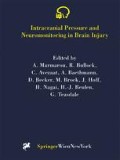Summary
To evaluate the changes of intracranial cerebrospinal fluid (CSF) dynamics in hydrocephalus, we studied the various parameters of cine phase contrast (PC) magnetic resonance (MR) CSF flow images in cases of acutely progressive hydrocephalus, comparing them with those in normal CSF circulation.
The MR images were obtained with 1.5 T unit using the 2 dimensional cine PC sequence with cardiac gating in 10 non-obstructive hydrocephalus (NOH), 3 obstructive hydrocephalus (OH), and 10 controls. The temporal velocity information from the anterior and posterior cervical pericord spaces, third and fourth ventricles, and aqueduct were plotted as wave form. The wave forms were analyzed for configurations, amplitude parameters (Smax, Smin, Sdif), and temporal parameters (R-S, R-SMV, R-D, R-DMV). The statistical significance of each parameter was examined with paired t-test. All patients with OH underwent endoscopic thrid ventriculostomy, whereas all NOH underwent shunting procedures.
In 5 ROIs, distinct reproducible configuration features were obtained at aqueductal and cervical pericord spaces. Statistically significant differences between control and hydrocephalus only in temporal parameters were determined. In NOH, the graph showed R-DMV shortening (p < 0.01) at anterior cervical pericord space. In OH, there were R-DMV shortening (p < 0.05) at anterior cervical pericord space, R-SMV shortening (p < 0.02) at posterior cervical pericord space. Also the level of obstructions could be determined in all OHs.
The analysis of MR CSF flow images may give us valuable information on the site of obstruction, explaining the cause of hydrocephalus, thus deciding the necessity of shunting procedures using in vivo images.
Access this chapter
Tax calculation will be finalised at checkout
Purchases are for personal use only
Preview
Unable to display preview. Download preview PDF.
References
Barkhof F, Kouwenhoven M, Valk J, Sprenger M (1990) Quantitative MR flow analysis in the cerebral aqueduct: controls vs communicating hydrocephalus (abstr). In: Book of abstracts: Society of Magnetic Resonance in Medicine, Berkeley, CA, pp 1–13
Bradley WG, Kortman KE, Burgoyne B (1986) Flowing cerebrospinal fluid in normal and hydrocephalic state: appearance on MR images. Radiology 159: 611–616
Bradley WG, Scalzo D, Queralt J, Nitz WN, et al (1996) Normal-pressure hydrocephalus: Evaluation with cerebrospinal fluid flow measurements at MR imaging. Radiology 198: 523–529
Bradley WG, Whittemore AR, Kortman KE, et al (1991) Marked cerebrospinal fluid void: Indicator of successful shunt in patients with suspected normal pressure hydrocephalus. Radiology 178: 459–466
DuBoulay GH (1966) Pulsatile movements in the CSF pathways. Br J Radiol 39: 255–262
DuBoulay GH, O’Connell J, Currie J, Bostic KT, Verity P (1972) Further investigations on pulsatile movements in the cerebrospinal fluid pathways. Acta Radiol 13: 496–523
Enzmann DR, Pelc NJ (1991) Normal flow pattern of intracranial and spinal cerebrospinal fluid defined with phase-contrast cine MR imaging. Radiology 178: 467–474
Gideon P, Stahlberg F, Thomsen C, Gjerris F, Sorensen PS, Henriksen O (1994) Cerebrospianl fluid flow and production in patients with normal pressure hydrocephalus studied by MRI. Neuroradiology 36: 210–215
Nielsson C, Stahlberg F, Thomsen C, Henrikson O, Herning M, Owman C (1992) Circadian variation in human cerebrospinal fluid production measured by MRI. Am J Physiol 262: R20–R24
Nitz WR, Bradley WG, Watanabe AS, Lee RR, Burgoyne B, O’Sullivan RM, Herbst MD (1992) Flow dynamics of cerebrospinal fluid: assessment with phase-contrast velocity MR imaging performed with retrospective cardiac gating. Radiology 183: 395–405
Portnoy HD, Choop M (1982) In commentary on Daley ML, Gallo AE, Gehling GF, et al: Fluctuations of intracranial pressure associated with the cardiac cycle. Neurosurgery 11: 617–621
Quencer RM, Donovan Post MJ, Hinks RS (1990) Cine MRI in the evaluation of normal and abnormal CSF flow: intracranial and intraspinal studies. Neuroradiology 32: 371–391
Refeeque A, Bogdan AR, Wolpert SM (1995) Analysis of cerebrospinal fluid flow waveforms with gated phase-contrast MR velocity measurements. AJNR 16: 389–400
Author information
Authors and Affiliations
Editor information
Editors and Affiliations
Rights and permissions
Copyright information
© 1998 Springer-Verlag Wien
About this paper
Cite this paper
Kim, MH., Shin, KM., Song, JH. (1998). Cine MR CSF Flow Study in Hydrocephalus: What are the Valuable Parameters?. In: Marmarou, A., et al. Intracranial Pressure and Neuromonitoring in Brain Injury. Acta Neurochirurgica Supplements, vol 71. Springer, Vienna. https://doi.org/10.1007/978-3-7091-6475-4_99
Download citation
DOI: https://doi.org/10.1007/978-3-7091-6475-4_99
Publisher Name: Springer, Vienna
Print ISBN: 978-3-7091-7331-2
Online ISBN: 978-3-7091-6475-4
eBook Packages: Springer Book Archive

